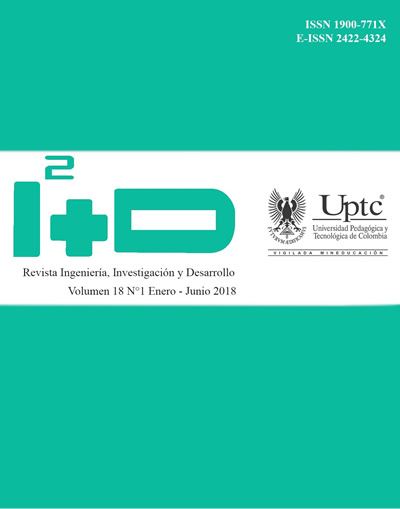Pulses and likelihood of Fúquene Lagoon flood occurrence

Abstract
The Lagoon of Fuquene has been repeatedly affected for flood events in the last 20 years. Due to this affectation, populations adjacent to the lagoon have been harmed, causing additional alterations to the biodiversity and ecosystem. With the purpose of studying the historical flood events of the lagoon, the daily records of the water levels of the lagoon of Fuquene will be evaluated. Based on that analysis, the historical flood pulses, flood frequency, flood probability of permanence was found. It was detected that the highest levels in the lagoon coincide with the winter seasons, which are April, May, June, July, November and December. The highest historical levels were presented in 2006, 2010, 2011 y 2012. This information is provided with the objective of guiding the nearby community of the lagoon or decision maker (relevant entities) to know when and duration of a possible flood, and to allow generate contingency plans and land use planning.Keywords
threat, Lagoon, Levels, probability of occurrence, flood pulses, Zones.
Supplementary File(s)
Sin título (Español) AUTORIZACION - RevistaUPTC (Español)Author Biography
Juan David Jimenez-Sanchez
Bogota D.C
References
- O. W. Cabrero, “La Laguna de Fúquene”. Boletín de la Sociedad Geográfica de Colombia, vol. 15, no. 53, pp. 1-20, 1957.
- Fundación Humedales, “Complejo De Lagunas De Fúquene, Cucunubá Y Palacio” 2017 Disponible en http://www.ecoindex.org/search/pdfs/796report_1.pdf.
- C. J . P. Espitia, “Análisis de la Aplicación del Enfoque Ecosistémico en la Estrategia de Manejo Ambiental de la Cuenca Ubaté-Suárez Implementada en la Laguna de Fúquene durante el período 2007-2009”, Tesis pregrado, Facultad de Relaciones Internacionales, Estrategia y Seguridad., Universidad Militar Nueva Granada., Bogotá, Colombia, 2010.
- Conpes, “Documento conpes 3451 Estrategia para el Manejo Ambiental de la Cuenca Ubaté-Suárez”, Consejo Nacional de Política Económica y Social República de Colombia Departamento Nacional de Planeación, Bogotá DC., 2006.
- J. J. Neiff, “El régimen de pulsos en ríos y grandes humedales de Sudamérica”. Tópicos sobre humedales subtropicales y templados de Sudamérica, vol. 229, pp. 99-103, 1999.
- V.M. Ponce, “El balance de nutrientes bajo el pulso de inundación” [online]. California: Universidad Estatal de San Diego, 2017 Disponible en http://ponce.sdsu.edu/el_balance_de_nutrientes_bajo_el_pulso_de_inundacion.html
- W. Junk, P.B. Bayley, and R.E. Sparks. “The flood pulse concept in river-floodplain systems”, Proceedings of the International Large River Symposium (LARS). Dodge, D.P. ed. Canadian Special Publication of Fisheries and Aquatic Sciences, vol. 106, pp. 110-127, 1989.
- CAR. “Plan de Ordenamiento de la Cuenca de los Ríos Ubaté y Suarez. Diagnóstico, prospectiva y formulación de la cuenca hidrográfica de los Ríos Ubaté y Suárez, Corporación Autónoma Regional de Cundinamarca CAR, Bogotá, 2006.
- L. Franco-Vidal, C. A. Ruiz-Agudelo, J. Delgado, G. Andrade y A. Guzmán, “Interacciones socioecológicas que perpetúan la degradación de la laguna de Fúquene, Andes orientales de Colombia.” Ambiente y Desarrollo, vol. 19, 37, pp. 49-66, Julio-Diciembre, 2015.
- C. Castaño-Uribe, R. Carrillo, & F. Salazar, “Sistema de Información Ambiental de Colombia Tomo III. Perfil del estado de los recursos naturales y del medio ambiente en Colombia 2001”, IDEAM. Min. Medio Ambiente, Bogotá, Julio 2002.
Downloads
Download data is not yet available.